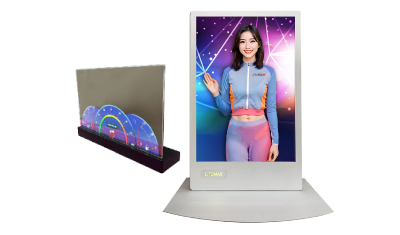SIMPLIFYING TRAVEL WITH SMART DIGITAL SIGNAGE

History shows that passengers want to be kept of abreast of the latest information concerning their travel, regardless of the means of transportation. For instance, while traveling on a bus or train, they want to know when their train will be departing, when it will arrive at its destination, what delays may occur along the way, information about the various stops/stations that are encountered, and so on. That multimedia information should be informative, and can also be entertaining.
In a transportation hub, the difficulty in providing that wealth of information grows exponentially. This is based on the size of the hub and the number of buses, trains, and other means of transportation that must be monitored and the number of connected subsystems that will be deployed throughout the terminal.

The PIS Is Up to the Task
This abundance of information differs greatly from what was available in the recent past, and for a good reason—it takes a reasonably compute-intensive platform to provide the information that travelers crave, and that platform is the multi-display Smart Onboard Passenger Information System (PIS).
Additionally, transport operators can streamline operations, expedite decisions, and increase passenger services while transforming public transit operations into a service-centric environment. The operators are encouraged to take on a proactive role in managing, monitoring, and mitigating issues through the transit system by providing real-time visualization of transportation operations.
Complex, But Not Impossible
The challenges faced by the engineer should not come as a surprise. Passengers want accurate, up-to-date information, provided dynamically, and will not tolerate inaccurate data. The days of static information should be behind us, especially as today’s travelers are busier, are moving faster, and are accustomed to having consistent, up-to-date information readily available, always in real time.
When articulating the goals for a PIS system, the number one priority should be the riders. Hence, the focus is on the customer experience. This includes vastly improved accessibility to pertinent information, giving riders more choices about how and when to use a service. In the end, such a system results in trust for that service, that hub, and even that city.
Keep in mind that when the PIS is on-board a moving vehicle or subject to various outdoor weather conditions, ruggedness is a must. Second, system longevity is also key, as many of these platforms are deployed for five, ten, or more years. Third, maintenance must be simple, as it is far more cost effective to send out basic repair personnel than having to deploy a team of engineers when a system malfunctions.
The Engineering Challenges
While the engineering challenges seem to be obvious, how to get passed those challenges may not be so clear cut. There is a wealth of tools, components, and software available to the designer, and the right choices can make or break a system in terms of budget, time to market, and system up-time. Once the initial choices are made, the engineer should ask how those challenges impact and/or align with the goals of the end application. Finally, the engineer must look at whether the system will be impacted by issues relating to geography, cost, time to market, and expected lifetime of the PIS.
In some respects, designing a PIS is not that different from designing any other platform that’s intended for outdoor and rugged applications. But when you add in the fact that it must live in its installation for ten years or more, extra thought is required. For example, you want to be able to perform software upgrades remotely, and clearly updates will be needed. You also need to ensure that security is baked in from the start, potentially mitigating hack attempts down the road.
The engineer has options available to him when designing the PIS. One option is to start with the Litemax ITRP series, which is designed for smooth and reliable operation, and serves as a reliable platform to provide passenger information on wide variety of vehicles, including trains and trams. The enhanced readability of the platforms’ TFT LCD panels is based on high brightness and low reflection, thanks to the company’s unique backlight system.

The ITRP series boasts an IP-65 protection rating to ensure that dust and rain don’t affect system operations. When combined with EN50155 railway standard compliance, the systems can confidently ensure the highest standards of reliability, flexibility, and expandability with new functions.
The feature set includes up to 16 Gbytes of system memory, a 64-Gbyte solid-state disk (further adding to reliability), and a host of I/O interfaces, including an M12 connector for dual Gigabit Ethernet, and COM, USB, and HDMI ports. The M12 connector is designed for washdowns and potentially corrosive environments.
The passenger information system represents the future. It’s what transportation hubs have been looking for and passengers have been demanding. At the same time, engineers working with Litemax should have high expectations, which include flexible operations and a high return-on-investment (ROI). The company has been designing sunlight readable, high brightness industrial displays for more than 20 years, including highly customizable platforms.
ITRP-3805-SKL2
37.6" EN50155 Railway Full IP65 Fanless Panel PC
- Intel® 6th Gen Core i7/i5/i3/Celeron (Skylake-U) processor support
- 37.6" LCD, 1920 x 540, 1000 nits
- EN50155 compliant for railwayFull IP65 and fanless design
- Support 24/36/48/72/96/110 VDC input with M12 connector
- Anti-Shock and vibration











































